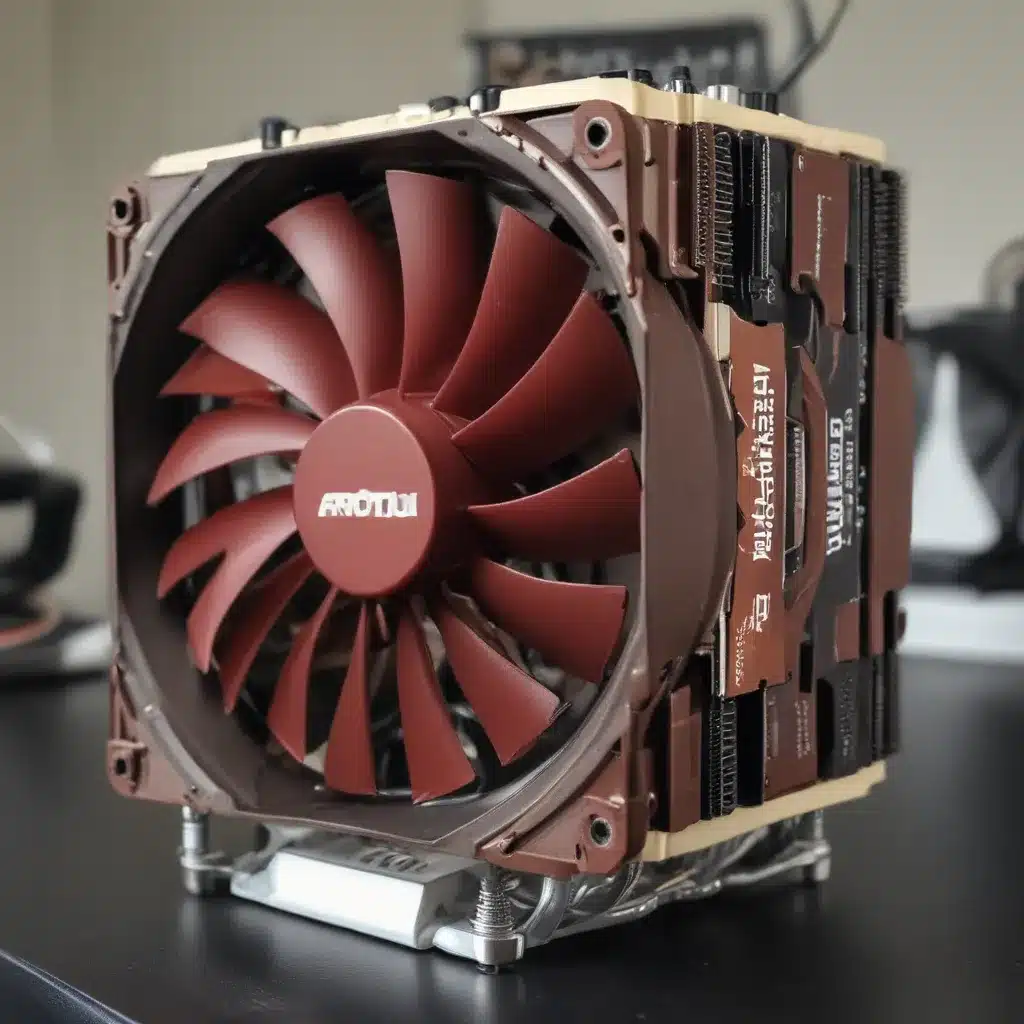Silence is Golden
I’ll admit it – I used to be a bit of a performance hound when it came to my gaming rigs. But as I’ve gotten older, the siren song of pure, unadulterated silence has become irresistible. No more jet engine-level fan noise drowning out the atmospheric audio in my favorite RPGs. No more sudden spikes in decibel levels that make my significant other give me the stink eye from across the room. Just blissful, peaceful quiet as I delve into the latest deep learning models or compile my code.
Choosing the Right Components
After scouring the reddit forums and Tom’s Hardware threads, I knew Noctua was going to be the key to creating my silent masterpiece [1][2][3]. These Danish cooling gurus have built a cult following for a reason – their fans manage to move massive amounts of air while producing practically no noise.
The tricky part was figuring out the rest of the build. I wanted to go with an AMD Ryzen 7800X3D CPU – the power and efficiency of that chip was perfect for my needs. But cooling it was going to be crucial. After much deliberation, I settled on the beefy Noctua NH-D15 air cooler. Yeah, I know water cooling is all the rage these days, but the simplicity and reliability of a top-notch air setup was too appealing to pass up [3].
Taming the Thermals
With the CPU side squared away, it was time to tackle the real heat demons – the GPUs. I decided to go with a trio of Nvidia RTX 2080 Ti cards, all decked out in Noctua’s signature brown and beige color scheme. These beasties have a reputation for running hot, but I had a plan.
First, I opted for the Fractal Design Torrent case. Its massive 180mm and 200mm fans promised to provide ample airflow to keep everything cool, even at lower RPMs [1]. And to harness that airflow, I went with Noctua’s monstrous NF-A20 PWM fans – four of them, in fact, acting as the case’s primary intake.
But the real key was the cooling setup. I meticulously poured over the forums, soaking up advice from seasoned water cooling veterans [4][5]. In the end, I landed on a beefy dual 360mm radiator configuration, with a pair of Noctua NF-F12 PWM fans pushing air through the top rad and pulling it across the front one.
Putting it all Together
Assembling this silent beast was no easy feat. Cramming all those Noctua fans, massive heatsinks, and intricate water cooling loops into the Torrent case was a bit like playing a game of Tetris on hard mode. But with patience, a healthy dose of caffeine, and plenty of helpful YouTube tutorials, I managed to get everything installed without any major mishaps.
The real moment of truth came during the initial leak testing. As I carefully filled the loop and inspected every fitting and connection, my heart raced with anxiety. But after a solid 24 hours with no drips or weeping, I breathed a sigh of relief. Time to power this baby on.
Silence Achieved
Booting up the rig for the first time, I held my breath. Would all my efforts pay off, or would I be greeted by the familiar cacophony of turbine-like GPU fans and a screeching CPU cooler?
To my absolute delight, the system powered on with barely a whisper. Even under heavy CPU and GPU loads, the Noctua fans remained practically inaudible, their blades spinning at a leisurely pace. The only faint sound I could discern was the gentle hum of the dual D5 pumps – and even that was easily drowned out by my desk fan.
Temperatures were equally impressive. With the beefy cooling setup, my Ryzen 7800X3D topped out in the high 60s Celsius, while the trio of 2080 Tis maxed out in the low 50s. Proof that Noctua’s engineering prowess is no mere marketing hype.
A Labor of Love
Building this silent AMD rig was certainly no walk in the park. From sourcing the right components to painstakingly assembling the water cooling loop, it was a labor of love that tested my patience on numerous occasions. But the end result was worth every drop of sweat and every moment of frustrated cursing.
Now, as I sit here typing away, the only sounds that grace my ears are the gentle tapping of my mechanical keyboard and the sweet, sweet silence of my PC. It’s a level of tranquility I didn’t even know was possible, and it has transformed my entire computing experience.
So if you’re on the hunt for a truly silent gaming rig, or just want to create a powerhouse of a deep learning machine that won’t drive you (or your coworkers) crazy, I can’t recommend a Noctua-infused AMD build enough. Just be prepared to put in the time and effort – but trust me, the payoff is more than worth it.
References:
[1] https://www.reddit.com/r/Noctua/comments/183u014/advice_for_a_silent_build/
[2] https://forums.tomshardware.com/threads/quiet-gaming-rig-advice.3772374/
[3] https://www.reddit.com/r/Noctua/comments/1akmkt0/4080_super_quiet_build_part_list_feedback/
[4] https://forum.level1techs.com/t/silent-itx-build-recommendations/156977/26
[5] https://medium.com/@markpalatucci/how-to-build-a-silent-multi-gpu-water-cooled-deep-learning-rig-for-under-10k-aefcdd1f96a5













